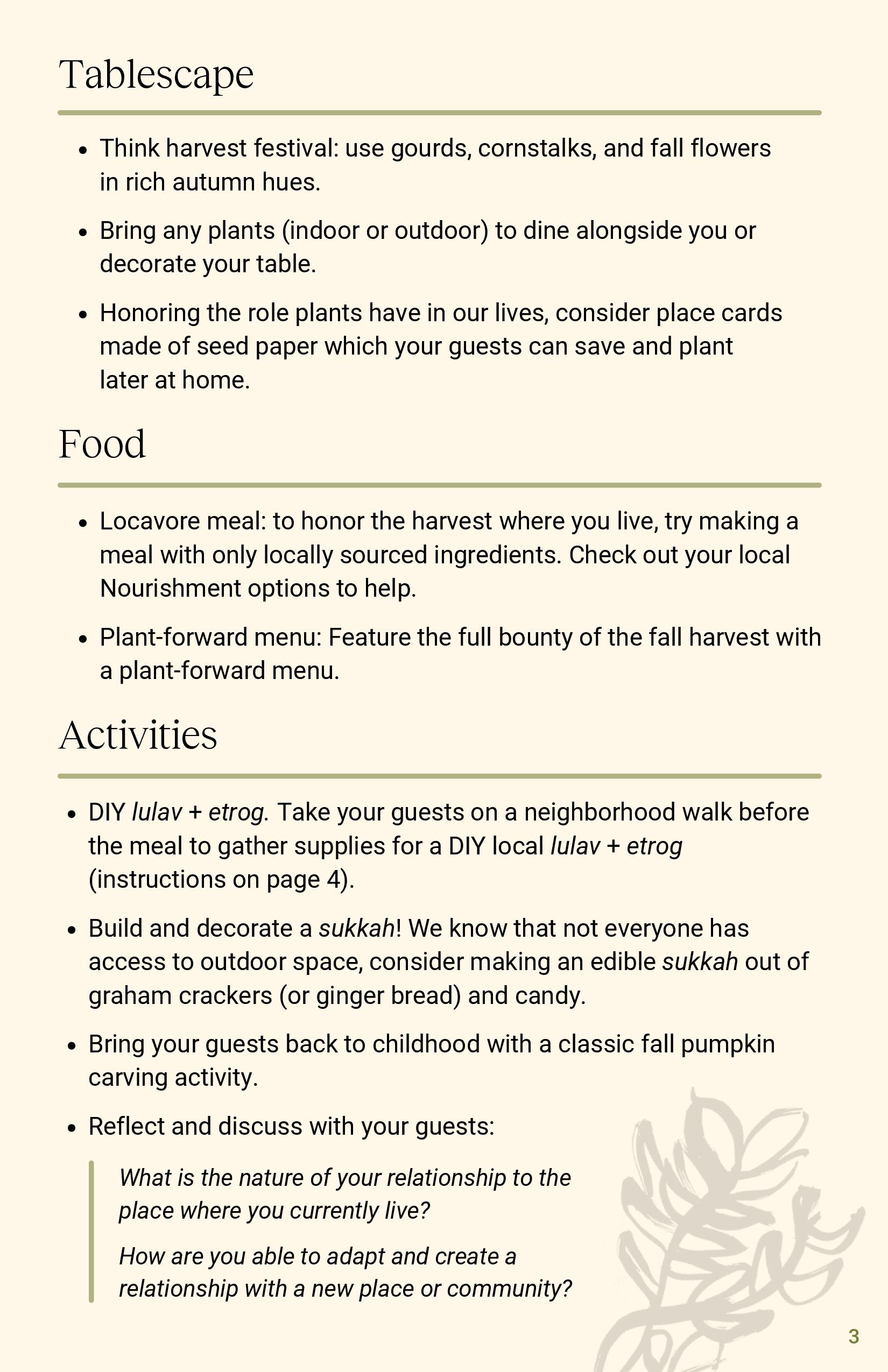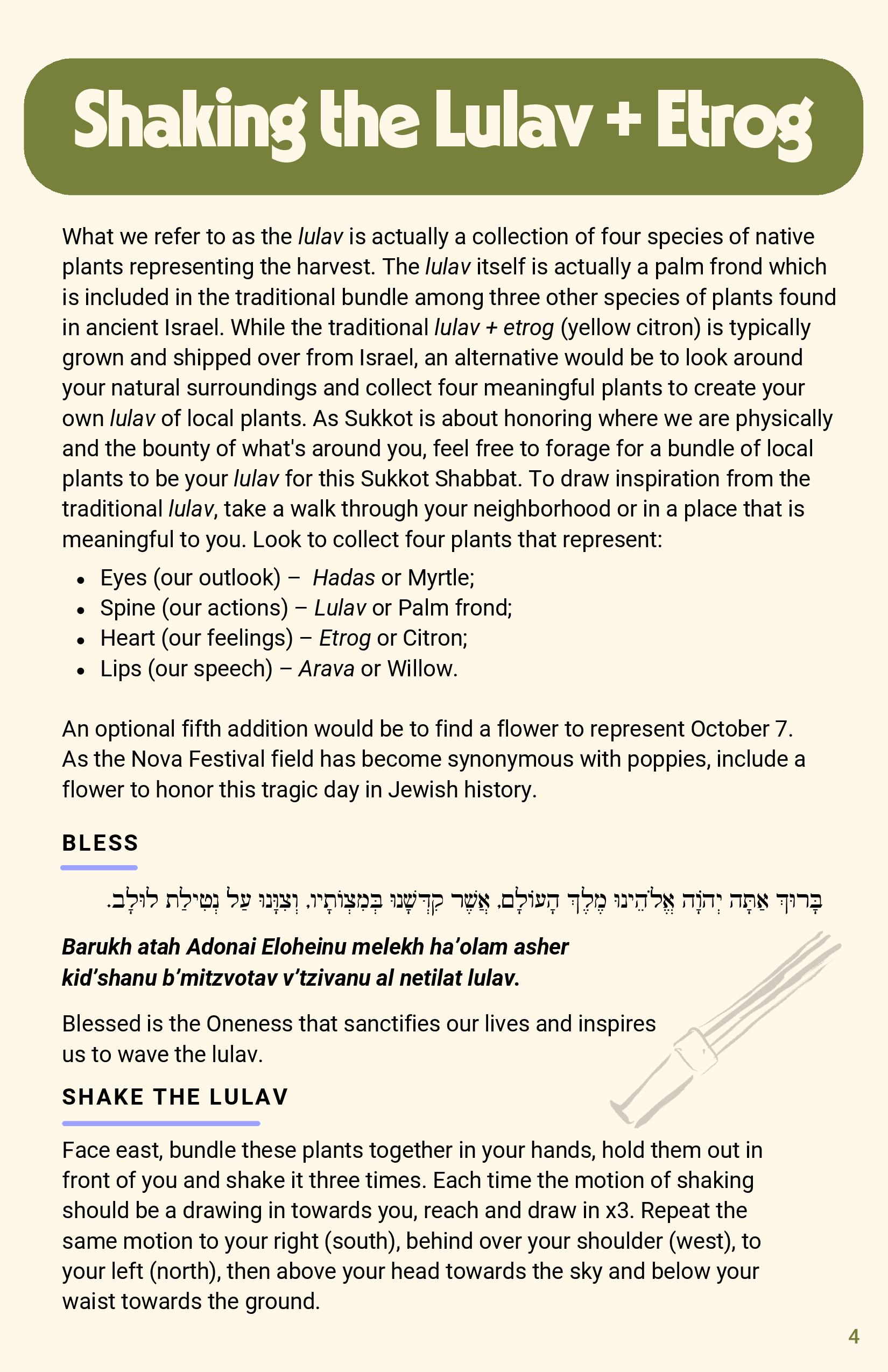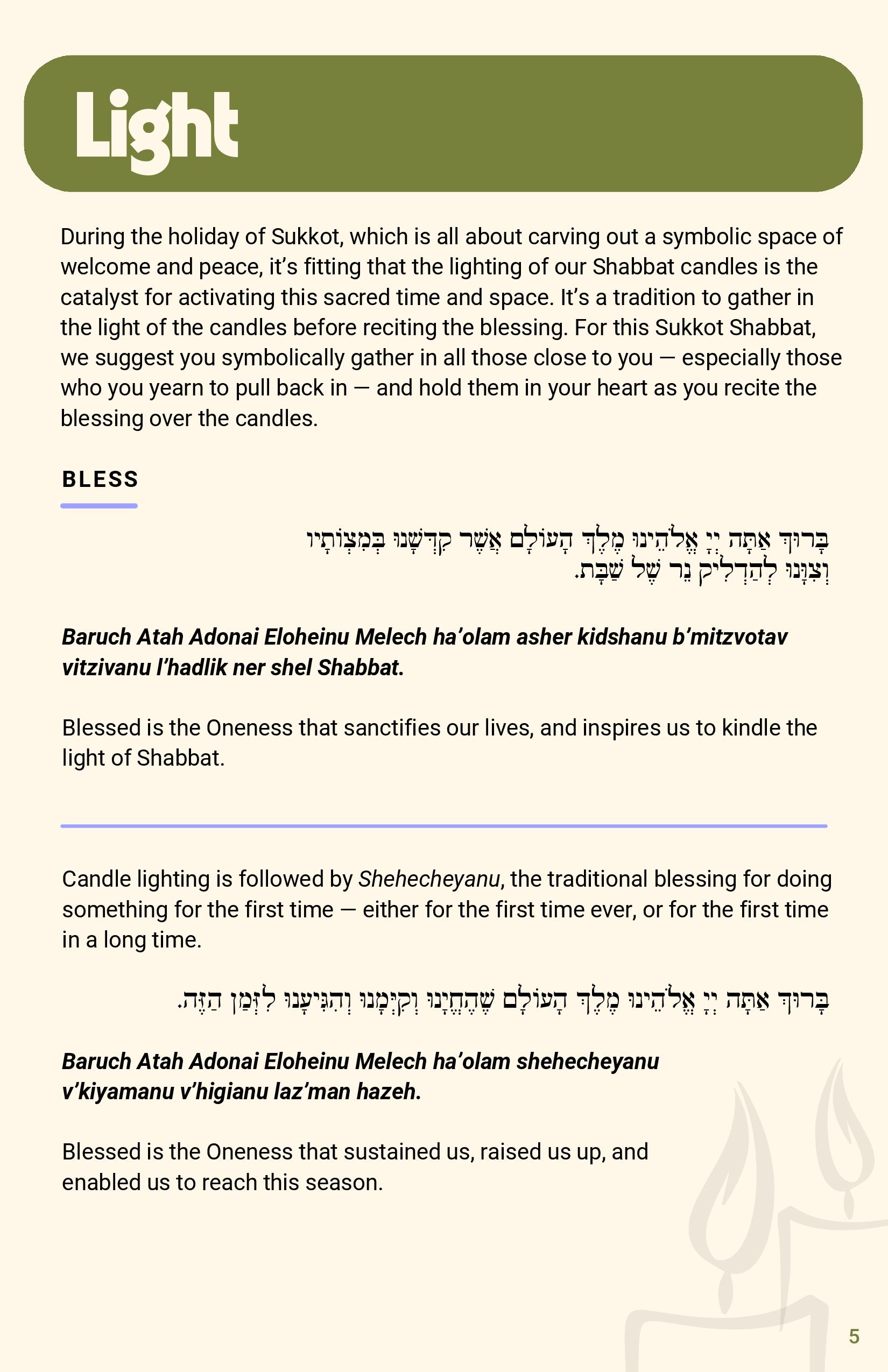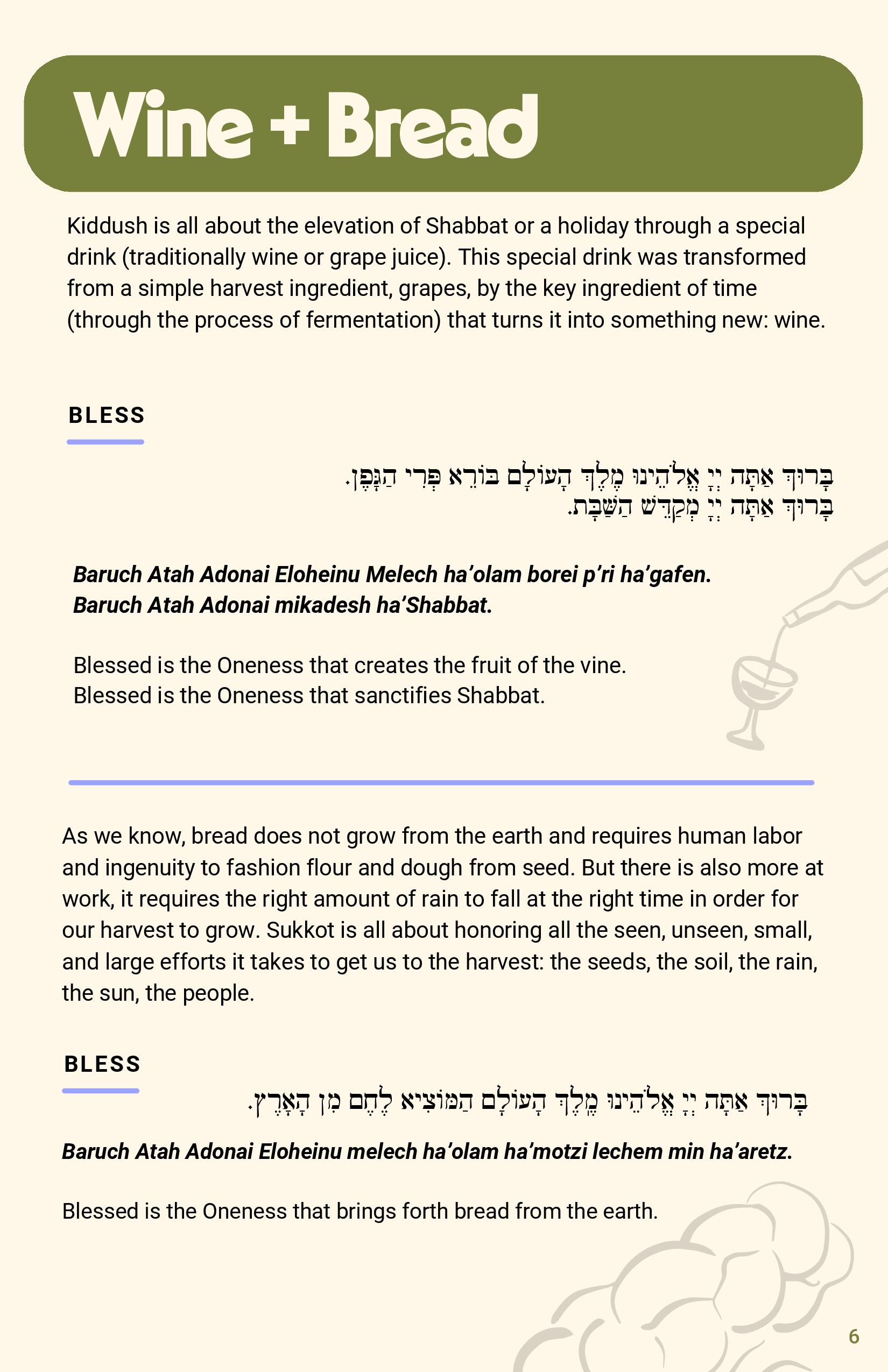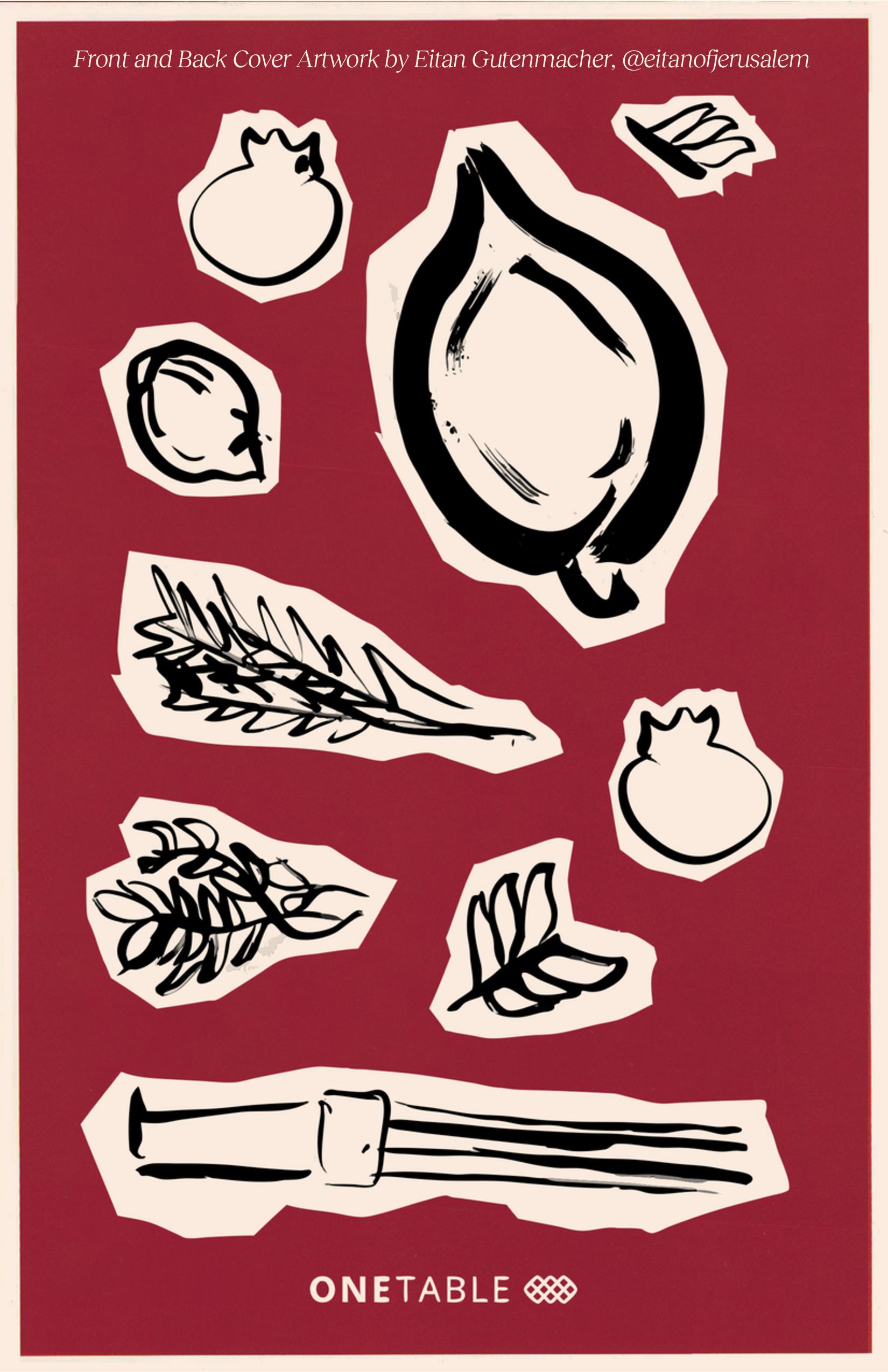We went all in on joy, elevation, and welcoming by commissioning unique art from New York-based artist Eitan Gutenmacher for this Sukkot Shabbat Guide. Not just beautiful decor, this guide will take you through Sukkot Shabbat, highlighting the special additions of this nature-based holiday.


